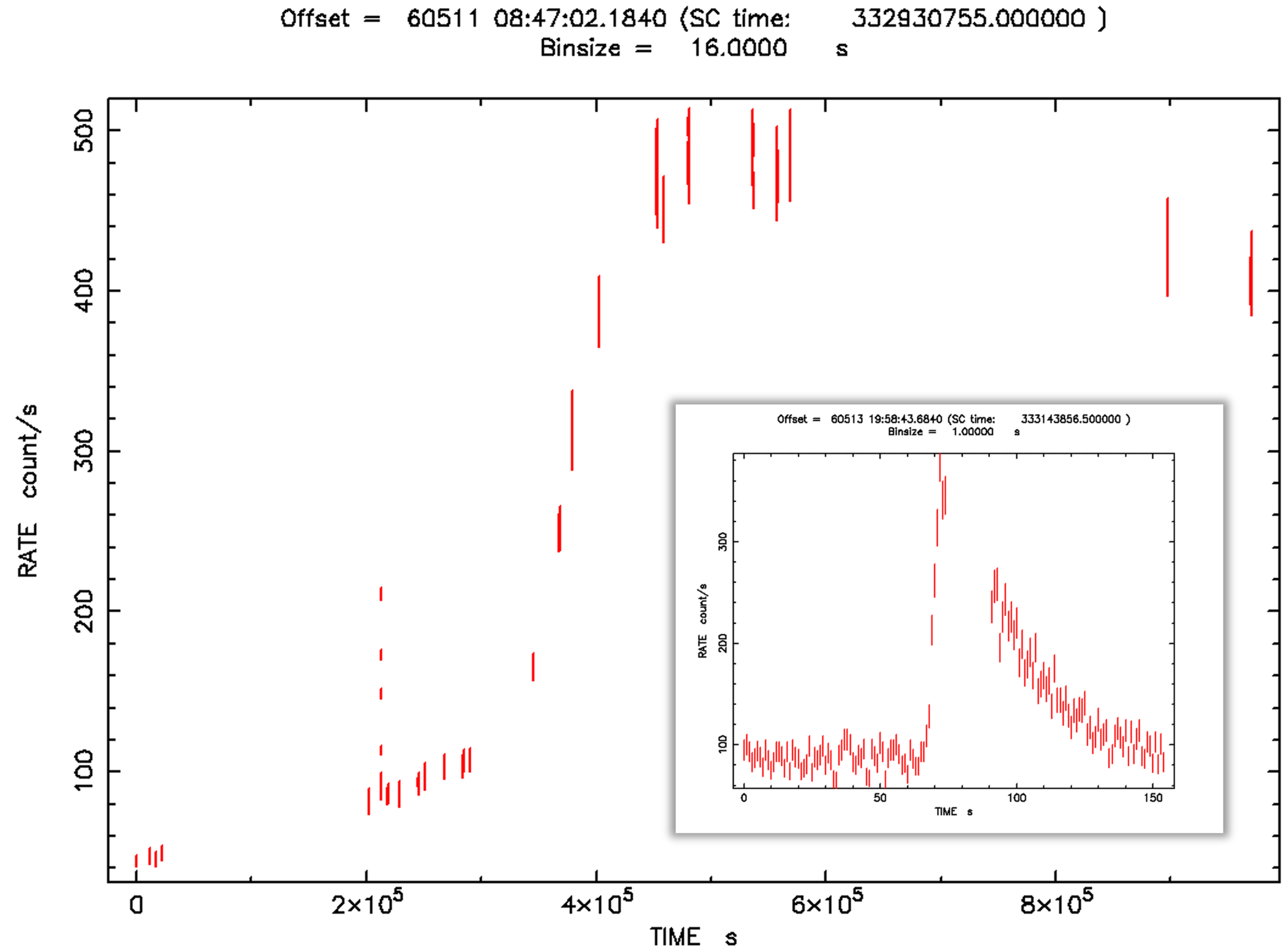NICER / ISS Science Nugget
for August 1, 2024
Opportunities that interrupt
Ever attentive to the dynamic sky, NICER welcomes interruptions to its "regular programming" in the form of targets of opportunity, such as requests to observe transient phenomena. Sporadic X-ray brightening of known or newly discovered systems cannot usually be predicted but may be captured by sky-scanning observatories designed for this purpose. In recent days, NICER has responded to reports of new activity in two binary systems that host neutron stars accreting matter from companion stars. The resulting observations were promptly reported to the global astronomy community via Astronomer's Telegrams (ATels), prompting additional coverage with other facilities.
On July 17, JAXA's MAXI payload reported detecting renewed activity from the known high-mass binary system XTE J1946+274. Pulsed X-ray emission at the expected 16-second recurrence period was readily observed; the pulses represent the neutron star's rotation rate and likely originate in a high-temperature flow of matter onto the compact star's surface from its companion. Similar to its prior outburst in 2021, this appears to be a short-lived reappearance of XTE J1946, which is already declining in brightness. M. Mandal (Midnapore City College, India) and collaborators reported these results in ATel #16744.
On July 16, the Wide-field X-ray Telescope aboard China's Einstein Probe observatory detected X-ray emission from a patch of sky that contained the known low-mass binary system 1A 1744-361. Although no pulsations have ever been detected from the neutron star in this system, past weeks-long outbursts have exhibited "Type I" bursts, the short-duration (10s of seconds) flashes of X-rays that result from thermonuclear explosions on the surface of a neutron star, as accumulated hydrogen and helium fuel drawn from the companion star achieve critical density and ignite in a fusion reaction. Within about 2 days of the start of NICER observations, another Type I burst was observed (see accompanying figure), and the system overall was observed to brighten dramatically another day or so later. The brightness of 1A 1744 is currently in a slow decline. H. Cheng et al. (Natl. Astron. Observatories, Chinese Academy of Sci.) and collaborators reported these results in ATel #16735.

Figure caption: Recent (July 20-31) NICER observations of the neutron-star binary system 1A 1744-361 in outburst reveal rapid brightening - followed by a plateau and slow decline - as well as a thermonuclear X-ray burst (inset; data in a nearly 20-sec telemetry gap just after the burst peakwere filled in during a later downlink).
<< Previous
Main Index